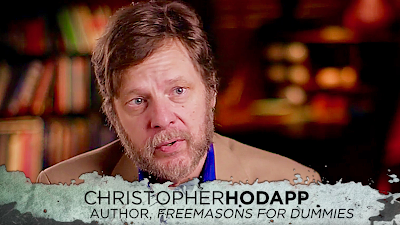by Christopher Hodapp
Minnesota Masonic Charities is the charitable giving foundation of the Grand Lodge of Minnesota, and their principal support is for the University of Minnesota's medical facilities. In the midst of the COVID-19 shutdown, the Masons of that state have just announced a $35 million gift to the University to establish the Masonic Institute for the Developing Brain, described as "an interdisciplinary initiative focused on the early diagnosis, prevention and treatment of neuro-developmental disorders in early childhood and adolescence."
Led by the University’s Medical School and College of Education and Human Development (CEHD), this unique institute will bring together teams of researchers and clinicians who study how the brain grows and develops during early childhood and adolescence—formative years when the brain is most receptive to positive intervention.
Working together under one roof at the site of the former Shriners Healthcare for Children campus in Minneapolis, an array of experts will tackle such disorders as autism, ADHD, cognitive delays, drug addiction and severe depression, conditions that can often be identified early and have lifelong consequences.
“Our long-standing partnership with the University of Minnesota aligns with our mission to make meaningful contributions to society,” said Eric Neetenbeek, president and CEO of Minnesota Masonic Charities. “The Masonic Institute for the Developing Brain is another example of how we can unite the incredible expertise of the University with the capacity of Minnesota Masonry to benefit our entire state and, indeed, the world.”
University of Minnesota President Joan T. A. Gabel, who has made student mental health one of her top priorities, believes the support will improve lives when it matters most. “Early support of brain health sets the stage for everything to come in life,” she said. “Thanks to the Masons’ transformative gift, the Masonic Institute for the Developing Brain will help ensure that children have the strongest start for a safe, happy and productive life.”
The Masonic Institute for the Developing Brain will form a research campus with M Health Fairview University of Minnesota Masonic Children’s Hospital and the University’s Biomedical Discovery District. The 10.2-acre property includes a two-level building with a hospital, clinic, and support area, as well as conference space and an attached parking lot. It is expected to open in Fall 2021 at the East River Parkway location.
This is by no means the only massive donation the state's fraternity has made to the University. With its latest gift of $35 million to establish and name the Masonic Institute for the Developing Brain, Minnesota Masonic Charities has contributed more than $160 million to the University of Minnesota to accelerate research discoveries in cancer and children’s health.
The University built the 80-bed Masonic Memorial Hospital in 1958 and the Masonic Cancer Research Building in the mid-’90s with support from Minnesota Masons. A $65 million pledge in 2008 to name the Masonic Cancer Center continues to advance major research discoveries. A $10 million gift from the Masons built the Masonic Cancer Clinic, which provides premier cancer care in the M Health Fairview Clinics and Surgery Center on the Twin Cities campus. In addition, a $25 million gift made in 2014 to enhance pediatric research and care led to the renaming of M Health Fairview University of Minnesota Masonic Children’s Hospital.
H/T: Douglas Campbell






































